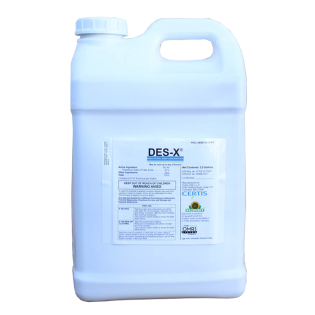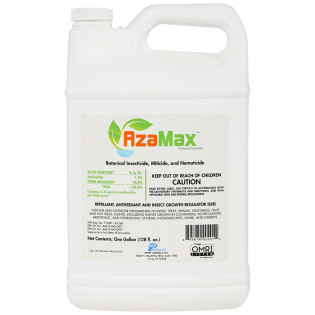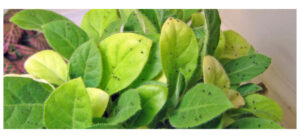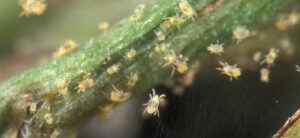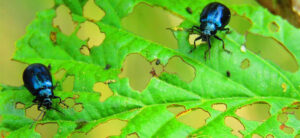
Trying to figure out how to get rid of scale bugs on your plants? You’ve come to the right place.
These tiny pests can be found on the leaves, twigs, branches, and fruits of all kinds of plants. While they’re most common on backyard trees and shrubs, there aren’t many kinds of plants that are immune.
In fact, scale insects are frequently found on houseplants and greenhouse-grown plants, too.
With thousands of different species of scale insects in North America alone, it may seem like you’re up against an impossible task when it comes to getting rid of an infestation.
However, there are some simple tips you can follow to rid yourself of these cumbersome critters for good.
Before we share our favorite methods, we'll cover what these guys can do to your plants, properly identifying scale, and preventing them in the first place.
What Are Scale Insects?

Scale insects are small, sap-sucking insects that attach to the fruits, leaves, twigs, and branches of various plants.
These bugs often don’t look like bugs at all, instead, they just look like bumps or growths on your plants.
There are essentially two types of scale insects, although, of course, there are many species that fall into either category. The first type is hard scale bugs.
These pests are about ⅛ of an inch long and have a hard protective covering that they actually secrete all over themselves.
This covering, despite how it may look, is not actually attached to the body of the insect. These insects do not secrete honeydew.
Soft scale insects can travel very short distances (but rarely do) and are a bit longer, about ½ an inch long.
Different Types Of Scale Insects Found On Plants

There are many types of scale insects, so if you look up a picture online you may not be seeing the same type of insect that you have. That may not be true.
With over 8,000 types of species, it would be impossible to cover them all. Instead, we are going to briefly list the most prominent here in North America.
- Coccidae - Especially troublesome, because they secrete a white, waxy coating that protects them from many insecticides. Commonly attacks coffee crops.
- Psuedococcidae - These are actually from the family of mealybugs, and are the only scale insect that has legs. But, they don't move around much either.
- Diaspididae - These scale bugs have an external armor, and look like they are shells. These protect themselves from other pests and insecticides with their shell.
- Margarodidae - Sometimes referred to as ground pearls, these scales are larger and appear to be fluffy or soft.
- Eriococcidae - These scales look like little bumps on your plants, and can be mistaken for a plant anomaly rather than an actual living insect.
What Do Scale Insects Do To Plants?
A scale insect infestation can be incredibly devastating. A heavy infestation can build up rapidly - often before you even notice any scale damage to your plants.
A large population could result in reduced growth and vigor, yellowed leaves, and even the death of your plants. Scale bugs almost always appear in clusters, so look for a grouping of scales.
They secrete a waxy film and produce lots of honeydew. This secretion is part of what makes a scale infestation so detrimental to your grow. The sticky substance leads to the congregation of other bugs, such as ants, wasps, etc.
But, honeydew can lead to the production of sooty mold as fungal organisms feed on it. While this won't necessarily harm your plant directly, its an unsightly appearance and can be one of the first signs of a problem.
Don't use the presence of honeydew as your main diagnostic tool in determining if you're dealing with scales, though. Other pests produce this as well, including whiteflies and aphids.
Can You Prevent Scale Insects On Plants?
Before we teach you how to get rid of scale insects on plants, we wanted to explain why we aren't teaching you how to prevent these buggers in the first place.
By simply practicing good garden cleanliness and remaining alert around your plants, constantly checking foliage for issues, you can prevent most pest issues. Does the same apply to scales?

Unfortunately, there aren't any real, tangible prevention methods we know of for this individual pest.
But, you can minimize your chances of a heavily infested garden by simply keeping your garden clean, removing plant debris, and keeping your compost away from your plants.
Try Diatomaceous Earth
Diatomaceous earth is natural dust that is made from the crushed-up skeletons of various micro-organisms.
It creates an abrasive surface, when dusted around plants, that will not only deter scale insects from coming close to your plants, but will kill them upon their arrival, too.
This treatment is most effective if you have not yet started to see scale insects on a particular plant. You can scatter some in your media as a prevention method.
It is best used around the stems of soft-stemmed plants. Diatomaceous earth will not harm pets, other animals, or beneficial insects in the slightest.
How To Get Rid Of Scale Insects On Plants

The right treatment method will vary based on your specific infestation - how progressed is it, what stage are your plants in, how do you feel about insecticides, etc.
We'll start with the least invasive treatment option, and then move on to pesticides as a last resort or for those in a rush.
Time Your Treatment
Scale insects are good at defending themselves. Your treatment will be more effective if you choose the right time to get rid of these pests. More specifically, if you catch these bugs early on.
The best way to implement a treatment is to do so during the nymph or “crawler” stage of this pest’s life cycle. You should do this when the nymphs have legs and are crawling to find new spots, not when they are attached to their host plant.
When you notice a few scales, either remove them manually or just snip off that branch. Take them far from the garden so they don't return.
Get Rid of Infested Plants
Your first step when dealing with a scale insect infestation should be to dispose of any infested twigs, branches, and leaves.
If you aren’t dealing with huge numbers of these pests, you can pull the bugs off your plants by hand.
Either way, you must get rid of any plant parts that have been infected - and don’t compost them, throw them in the trash.
Use Beneficial Bugs

Certain insects, like lacewings and ladybugs, are actually natural enemies of scale insects when they are in the young larval stage.
Unfortunately, as these bugs progress and develop strong protective shells, they become tougher for beneficial bugs to get rid of. These shells can be very tough, hence the nickname armored scales.
Nonetheless, consider using them to eliminate an infestation. You can purchase these insects online and release them into your garden or grow plants that will attract them.
Prevent Pests from Overwintering
Scale insects can overwinter in tree bark, either as nymphs or as eggs.
You will want to spray any plants that had a known infestation, ideally in the late spring, with horticultural oil.
The Best Pesticides To Get Rid Of Scale Insects
There are some botanical pesticides you can use to get rid of scale on plants. These should be used if you have tried and failed with less invasive methods.
Sometimes you just want to get straight to business without messing around.
Throughout history,, insecticides have a negative connotation and get a bad rep. But, when used properly, these are completely safe for you, your plants, and the environment.
They break down quickly in the environment so you won’t have to worry about harmful side effects.
Other organic options you can use include d-Limonene and insecticidal soap. To effectively control scale insects while in their egg hatching stage, you may need several applications.
General Hydroponics AzaMax Concentrate is another insecticide you can use. A concentrated spray, it’s approved for use by organic growers and contains the main insecticidal ingredient in neem oil, azadirachtin.
Another great option is Safer Brand 3 in 1 Garden Spray Concentrate. This is another OMRI-listed broad-spectrum insecticide. Its good to keep in your arsenal, as it is great at removing scale, but can also eradicate a wide range of pests as well.
Neither of these are toxic to bees and other pollinators, either.
How To Get Rid Of Scale Insects On Indoor Plants
If you have a scale infestation on indoor plants including houseplants, you need to be extra diligent about getting rid of it.
The grow room is usually safe from most pests, but every now and then, some smarter bugs will slip through the cracks and crawl in through your ducting ports.
These pests won’t have any natural predators inside your house, so they’ll spread even faster than they can outside.
If you are able to catch the problem early, you can prune infested stems to get rid of your problem.
However, if it gets ahead of you, you will want to use a cotton swab dipped in rubbing alcohol to kill the plants.
You will also need to remove the dead insects so that you are able to see whether there are any new infestations.
You can use a small facial sponge, like the ones you would find in the make-up aisle of a store, to gently scrape the plant stems and remove these harmful pests.
Final Thoughts On How To Get Rid Of Scale Insects
A scale insect infestation is certainly not a fun situation to have to deal with - but it doesn't have to prove disastrous for your plants.
The best way to prevent a scale insect infestation is to practice good gardening hygiene.
Rotate your crops on a regular basis (when possible) and make sure you water first thing in the morning so your plants have plenty of time to dry out throughout the day. Weed and fertilize regularly, too.
If you do run into these frustrating pests, come back and grab whatever pesticide or product you need to restore conditions in your garden. Now that you know how to get rid of scale insects, its just a matter of remaining vigilant and staying ready.
If you want to learn more, check out our blog on the most common grow room pests and diseases.







